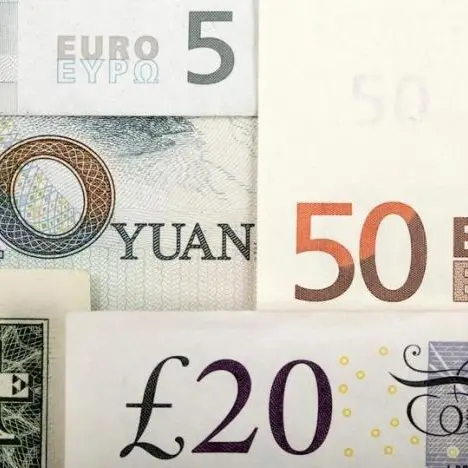NEW DELHI - India's imports of African crude oil in October plunged to their lowest in over four years, with the world's No.3 oil consumer increasingly turning to cheaper supplies from the United States and heavier Middle Eastern grades, ship tracking data showed.
U.S. crude production
C-OUT-T-EIA
has soared more than 14 percent since mid-2016 to 9.65 million barrels per day (bpd), altering trade routes as its relatively cheap and light grades become a viable import option for Asian refiners.
"Earlier in Asia, West African oil was competing with Middle East grades, but now it has a new competitor: the U.S.," said Ehsan Ul-Haq, director of crude oil and refined products at consultancy Resource Economist.
Surging U.S. crude output has made West Texas Intermediate (WTI)-linked American oil relatively cheap compared with the international benchmark, Brent, which has been propped up by supply cuts led by the Organization of the Petroleum Exporting Countries (OPEC).
WTI has since October been trading at an average discount of $6 per barrel to Brent.
"In the last few months, U.S. oil gave tough competition to the African grades and the price difference (between WTI and Brent) was good enough to cover the freight," said R Ramachandran, head of refineries at Bharat Petroleum Corp
U.S. crude oil exports to India were unheard of until 2015, when Washington eased tight export restrictions in parallel with its growing output.
Rising steadily this year, U.S. oil in October accounted for about 3 percent of India's overall imports, while the share of African crude fell to about 10.5 percent, the lowest since November, 2012, the ship tracking data in Thomson Reuters Eikon showed.
India's oil imports in October totalled 4.1 million bpd, a decline of 15 percent over September, when they hit a monthly record. The imports were also 4.6 percent lower than a year ago. Of that, around 430,000 bpd came from Africa, the lowest level since March, 2013.
Supply disruptions in Nigeria also dented its exports, forcing Indian refiners to seek supplies elsewhere.
Last month, the share of the Middle East crude in India's overall imports rose to its highest in about a year, making up almost 70 percent of all supplies, the data showed, shipping over around 2.8 million bpd.
Ramchandran said India's new and expanded refineries were geared towards processing heavy oil from the Middle East.
"Instead of low sulphur, refiners are looking at medium sulphur oil, so cargoes are shifting from West Africa to the Middle East," Ramachandran said.
India's biggest oil supplier is Iraq, followed by Saudi Arabia. Iran replaced Nigeria as the third-biggest supplier.
(Reporting by Nidhi Verma; Editing by Henning Gloystein and Joseph Radford) ((nidhi.verma@thomsonreuters.com; +91 11 49548031; Reuters Messaging: nidhi.verma.thomsonreuters.com@reuters.net))
U.S. crude production
"Earlier in Asia, West African oil was competing with Middle East grades, but now it has a new competitor: the U.S.," said Ehsan Ul-Haq, director of crude oil and refined products at consultancy Resource Economist.
Surging U.S. crude output has made West Texas Intermediate (WTI)-linked American oil relatively cheap compared with the international benchmark, Brent, which has been propped up by supply cuts led by the Organization of the Petroleum Exporting Countries (OPEC).
WTI has since October been trading at an average discount of $6 per barrel to Brent.
"In the last few months, U.S. oil gave tough competition to the African grades and the price difference (between WTI and Brent) was good enough to cover the freight," said R Ramachandran, head of refineries at Bharat Petroleum Corp
U.S. crude oil exports to India were unheard of until 2015, when Washington eased tight export restrictions in parallel with its growing output.
Rising steadily this year, U.S. oil in October accounted for about 3 percent of India's overall imports, while the share of African crude fell to about 10.5 percent, the lowest since November, 2012, the ship tracking data in Thomson Reuters Eikon showed.
India's oil imports in October totalled 4.1 million bpd, a decline of 15 percent over September, when they hit a monthly record. The imports were also 4.6 percent lower than a year ago. Of that, around 430,000 bpd came from Africa, the lowest level since March, 2013.
Supply disruptions in Nigeria also dented its exports, forcing Indian refiners to seek supplies elsewhere.
Last month, the share of the Middle East crude in India's overall imports rose to its highest in about a year, making up almost 70 percent of all supplies, the data showed, shipping over around 2.8 million bpd.
Ramchandran said India's new and expanded refineries were geared towards processing heavy oil from the Middle East.
"Instead of low sulphur, refiners are looking at medium sulphur oil, so cargoes are shifting from West Africa to the Middle East," Ramachandran said.
India's biggest oil supplier is Iraq, followed by Saudi Arabia. Iran replaced Nigeria as the third-biggest supplier.
(Reporting by Nidhi Verma; Editing by Henning Gloystein and Joseph Radford) ((nidhi.verma@thomsonreuters.com; +91 11 49548031; Reuters Messaging: nidhi.verma.thomsonreuters.com@reuters.net))











